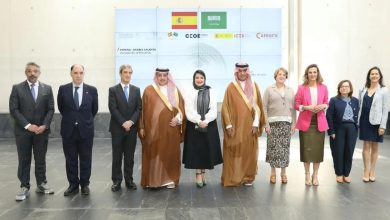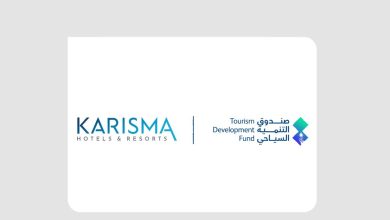Saudi non-oil private sector activity rises by highest rate since December 2017: S&P PMI

The Saudi Arabian non-oil private sector continued to grow strongly in March, according to S&P global latest Purchasing Managers’ Index (PMI) report issued in April. The latest PMI data pointed to marked expansions in output and new orders.
According to the report, Saudi Arabia’s non-oil private sector has reached its fastest rate of growth in over four years, helped by stronger improvements in purchasing and supplier delivery times.
However, the report indicated that Saudi firms were also vulnerable to a sharp escalation in energy and material prices due in part to the war in Ukraine, culminating in the strongest uplifts in both costs and selling charges since August 2020.
Furthermore, the headline seasonally adjusted S&P Global Saudi Arabia Purchasing Managers’ Index posted at 56.8 in March, rising from 56.2 in February and staying above the 50.0 mark that separates growth from contraction. The reading was also the highest recorded since November last year to signal a sharp improvement in business conditions across the non-oil private sector economy.
David Owen, Economist at S&P Global, said: “The Saudi Arabia PMI continued to signal strong growth in the non-oil economy in March, as new business and activity rose sharply in line with recovering client demand. Supply chains also displayed strength, with lead times shortening to the greatest extent for three years. In turn, companies raised their purchasing at the fastest rate since December 2017, supporting higher capacity levels.
He added that, on the flip side, cost pressures escalated during March as commodity prices turned volatile in response to the Russia-Ukraine war. Rising petrol and raw material prices greatly added to firms’ expenses sheets.
However, Owen believes that with sales also improving, businesses were able to increase their output prices accordingly – both costs and charges rose at the strongest rates since August 2020.
S&P report showed that three of the five sub-indices of the PMI had a positive influence over the latest survey period, most notably the Output Index which rose to its highest level since December 2017.
Accordingly, approximately 28% of panellists found that output had risen from the previous month, often relating this to an increase in new orders and project work.
Moreover, new business growth in Saudi Arabia was similarly marked at the end of the first quarter, rising to the strongest extent since last November. Businesses continued to highlight a pick-up in economic conditions as the impact of the pandemic receded, leading to new clients and increased sales. Also, Saudi firms saw an upturn in new export orders, for the first time in three months, albeit a modest one.
According to the report, with output and new orders rising sharply, Saudi Arabian non-oil firms raised their input purchases amid efforts to meet current demand and prepare stocks for future growth. The expansion in input buying was the fastest registered since December 2017 and resulted in a sharp and quicker uplift in inventory levels.
Stockbuilding was also fuelled by an improvement in supplier performance, as vendors were often able to make quicker deliveries in response to client demands. As a result, average 70 lead times shortened to the greatest extent in exactly three 65 years. 60
The improved supply of inputs contributed to a reduction in 55 outstanding work, continuing the trend seen since February
2020. Although the decline in backlogs was only marginal, 50 some firms sought to reduce their labour capacity, leading to 45 the first drop in employment for a year.
Meanwhile, a sharp rise in global energy and commodity prices due to the Russia-Ukraine war was reported to have inflated cost burdens at Saudi Arabian businesses in March.
Firms commonly saw a rise in the price of petrol as well as several raw materials, leading to a marked increase in purchasing costs. With staff costs also up fractionally, input prices rose at the fastest rate in just over a year-and-a-half. A solid uplift in output charges was also registered in the latest data.
Regarding future activity, firms remained generally upbeat in March, albeit slightly less so compared to February. About 14% of panellists forecast a rise in output over the next 12 months, amid expectations that the current strong growth in sales will continue. However, the level of sentiment remained weak compared to the historical trend.
Over the recent year, the Kingdom has witnessed economic and financial structural reforms which promote economic growth while preserving stability and financial sustainability.
This is evident in the improvement of the business environment in the Kingdom, and the continuous endeavor to enable the private sector to support economic diversification and overcoming obstacles to make it more attractive to invest in previously untapped sectors.
In order to develop and diversify the economy and reduce dependence on oil, Saudi Arabia launched Saudi Vision 2030; built on several economic and financial reforms, which aim to transform the structure of the Saudi economy into a diversified and sustainable economy focused on enhancing productivity, and increasing the contribution of the private sector.
Since the launch of the Vision, Saudi Arabia has succeeded in implementing many initiatives and structural reforms to enable economic transformation. This transformation included several major efforts centered around enhancing local content, national industry, launching and developing promising economic sectors, and an enabling dimension aimed at maximizing the role of the private sector and SMEs, and enhancing the sustainability of public finances. These structural shifts have contributed to strengthening the Kingdom’s economy and its ability to combat the Covid-19 pandemic in 2020. It is expected that the pace of this structural transformation will continue in the coming years, in light of a number of investment initiatives under the Public Investment Fund and leading companies. It is also expected that the localization of knowledge and innovative technologies will accelerate.





